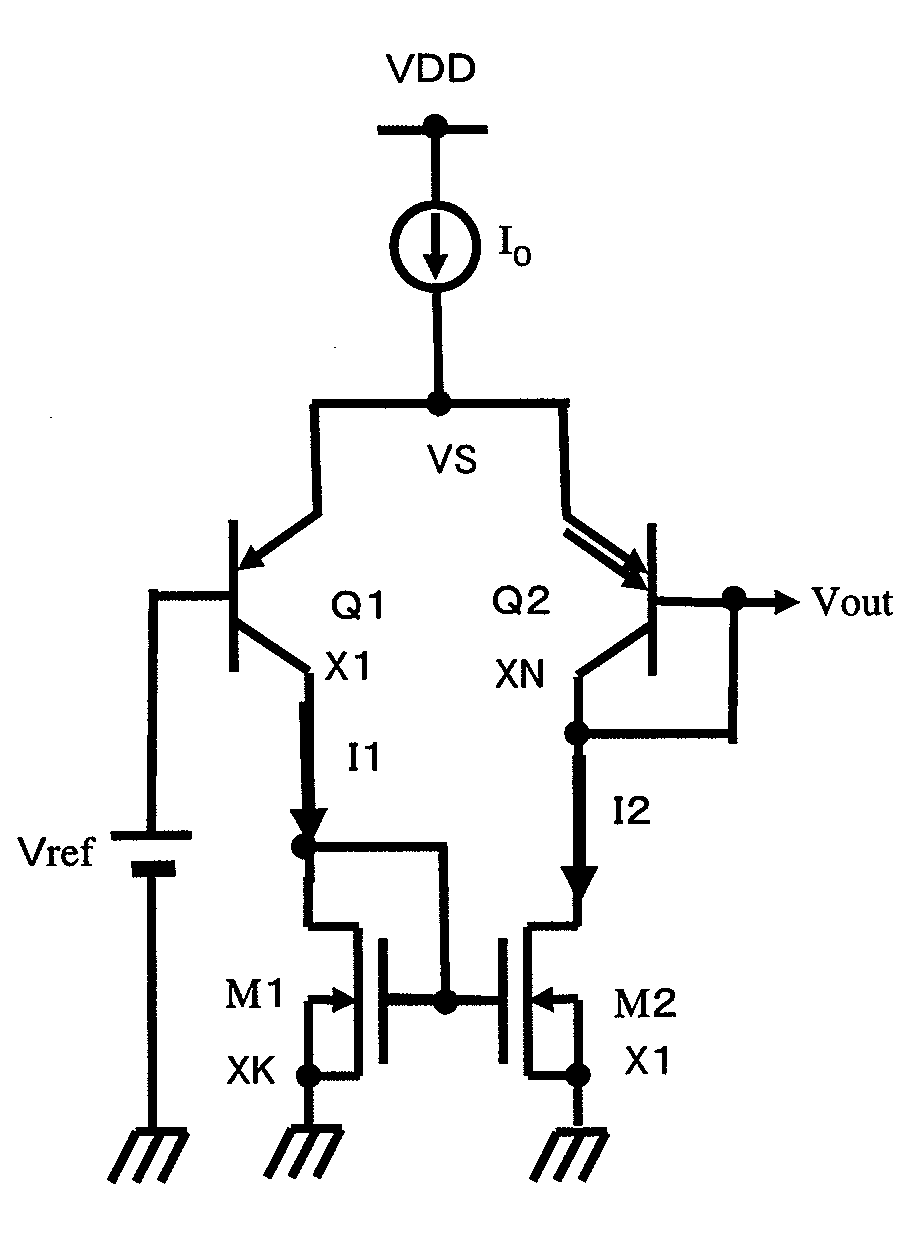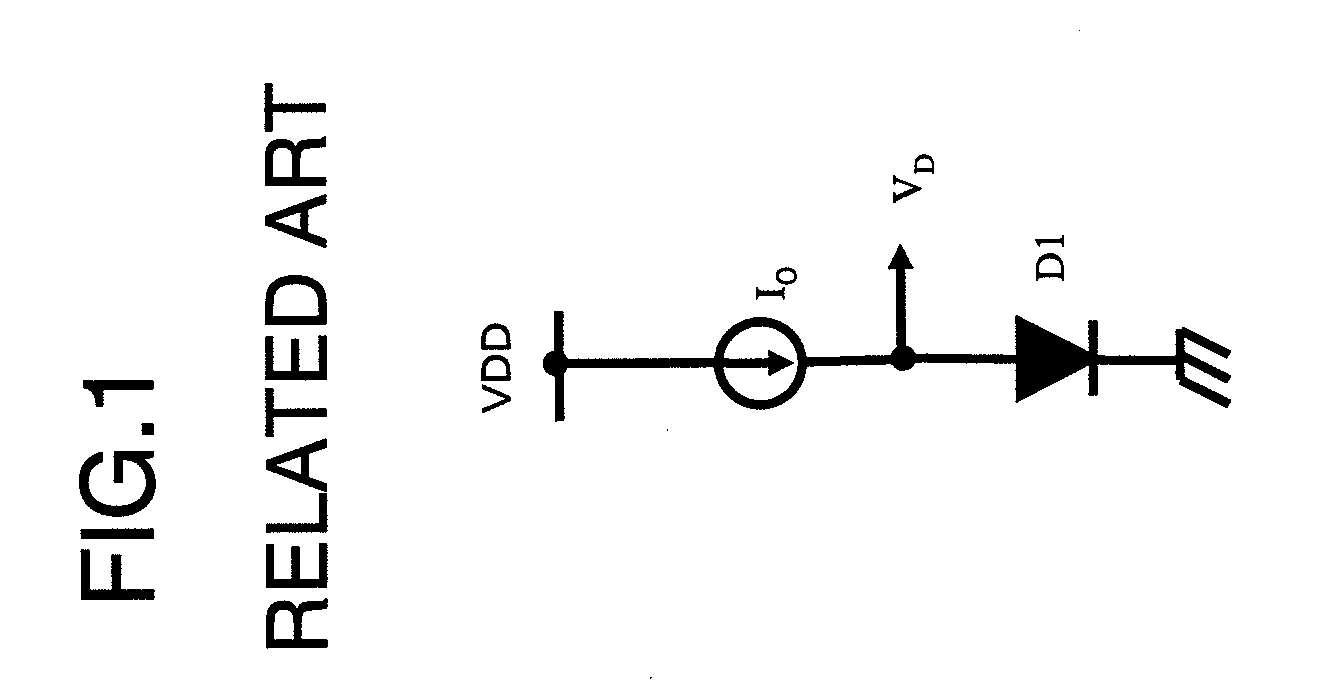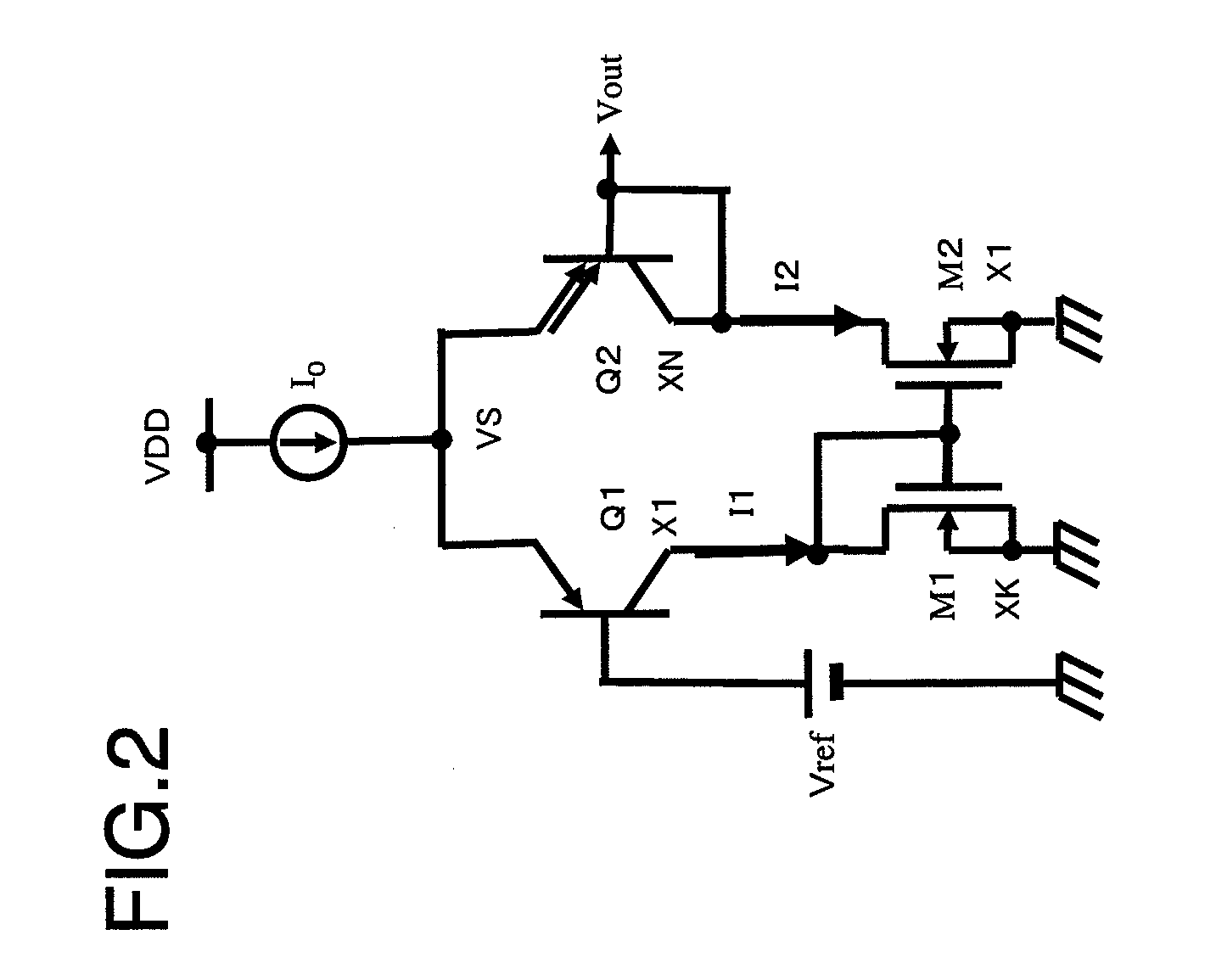Temperature sensor circuit
a temperature sensor and circuit technology, applied in the field of temperature sensor circuits, can solve the problems of inability to implement circuits, inability to improve the accuracy of sensing temperature, and difficulty in improving accuracy, so as to achieve excellent temperature linearity and ease of amplifying
- Summary
- Abstract
- Description
- Claims
- Application Information
AI Technical Summary
Benefits of technology
Problems solved by technology
Method used
Image
Examples
Embodiment Construction
[0027]Exemplary embodiments of the present invention are now described with reference to the drawings.
[0028]FIG. 2 depicts a circuit configuration of an exemplary embodiment of a temperature sensor circuit. This configuration corresponds to claim 1. Referring to FIG. 2, the circuit includes a bipolar differential pair transistors (pnp bipolar transistors) (Q1, Q2), having coupled emitters connected to one end of a constant current source I0, the other end of which is connected to a power supply VDD and N-channel MOS transistors (M1, M2) which are connected to the collectors of the differential pair transistors (Q1, Q2) to constitute a current mirror. A reference voltage (constant voltage) Vref is applied to the base of the bipolar transistor Q1. The collector and the base of the bipolar transistor Q2 are connected together and an output voltage Vout is produced at the connection node of the collector and base of the bipolar transistor Q2.
[0029]The bipolar transistors Q1 and Q2 are n...
PUM
 Login to View More
Login to View More Abstract
Description
Claims
Application Information
 Login to View More
Login to View More - R&D
- Intellectual Property
- Life Sciences
- Materials
- Tech Scout
- Unparalleled Data Quality
- Higher Quality Content
- 60% Fewer Hallucinations
Browse by: Latest US Patents, China's latest patents, Technical Efficacy Thesaurus, Application Domain, Technology Topic, Popular Technical Reports.
© 2025 PatSnap. All rights reserved.Legal|Privacy policy|Modern Slavery Act Transparency Statement|Sitemap|About US| Contact US: help@patsnap.com



